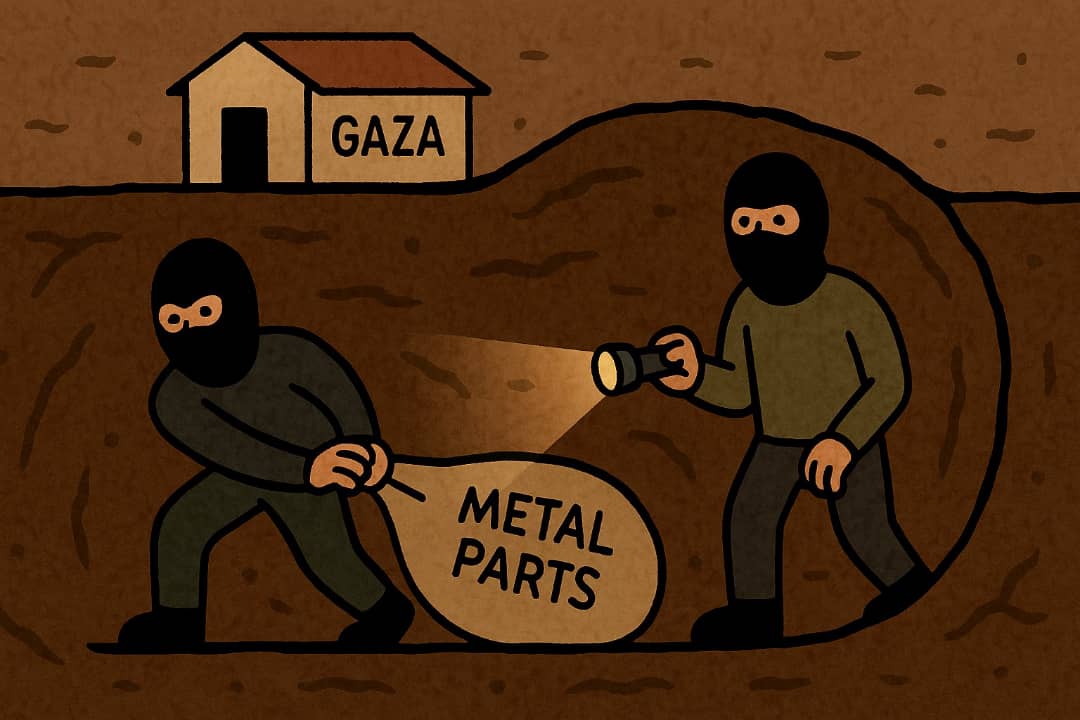Conflict
Ways Hamas Brings Weapons Into Gaza

Hamas is a group in Gaza. Gaza is a small place surrounded by Israel, Egypt, and the sea. Israel and Egypt control the borders. They do not allow weapons to enter Gaza. But Hamas still gets weapons. Many people want to understand how that happens.
One way is through tunnels. There are many underground tunnels between Gaza and Egypt. People dig these tunnels secretly. They use the tunnels to bring in goods, fuel, and sometimes weapons. These tunnels are hidden under houses and farms. Egypt tries to destroy them, but new tunnels are often built again.
Another method is smuggling through the sea. Gaza has a small coastline. Boats and divers use the water to bring in small items. These include parts of weapons. The sea is not open, but some people still find ways to move things quietly. Israeli forces monitor the sea, but not everything is stopped.
Some weapons are homemade. Hamas has people who build weapons inside Gaza. These are not like factory-made weapons, but they work. They collect parts from metal scraps, pipes, and chemicals. Some tools and machines used for farming or building can be changed into weapon-making equipment. They also learn from videos and messages shared on secure internet channels.
Sometimes weapons come in as parts. A full weapon is hard to smuggle. But small parts like springs, circuits, or metal tubes are easier to hide. These parts can be used to build rockets, guns, or bombs. These parts are sometimes mixed with other goods like electronics or machinery. It is hard for border officers to check every item.
Another source is leftover weapons from old wars. Gaza has seen many battles. Some weapons were left behind by soldiers or found in destroyed areas. People fix and reuse them. Old bullets and explosives are collected and changed into new weapons.
There are also reports of weapons coming through fake aid. During a war or conflict, aid trucks come into Gaza with food and medicine. Some of these trucks have been accused of hiding weapon parts. The borders try to inspect every truck, but sometimes things pass through.
Some people in other countries support Hamas. These supporters send money and materials. The money is used to buy parts and tools. It is not easy to move money into Gaza, but people use secret ways. They use cryptocurrency or send cash with travelers. Some money passes through charity groups that are not well-checked.
Weapons also come from groups outside Gaza. Some countries are accused of sending support to Hamas. They send experts, training, and information. They use diplomatic channels or hidden supply routes. These routes are not open to the public, and they are very hard to track.
The internet helps with learning. Hamas uses the internet to learn how to make weapons. They study military documents, designs, and tutorials. They do not need a full army to build weapons. They use small teams and hidden places. Some of these places are underground or inside civilian buildings.
Israel and Egypt try to stop the weapons. They check borders, scan goods, and destroy tunnels. But the supply does not fully stop. New methods are always coming up. When one path is blocked, another one opens.
Many civilians in Gaza do not support weapons. But Hamas controls many areas. It is hard for people to stop them. Some people are forced to help. Others are paid. This makes it difficult to trace who is responsible.
Satellite images and drones are used to find tunnels and storage places. But some tunnels are too deep or hidden under crowded places. Digging into the ground is not always possible because it affects buildings and homes.
There are also weapon prototypes made from civilian items. Pressure cookers, batteries, fertilizer, and cooking gas have been turned into weapons. These are called improvised weapons. They are not strong like factory weapons but can cause damage.
During ceasefires, more goods enter Gaza. That time is used to stockpile tools. Even when weapons are not coming in directly, items that help with production do. These include wires, nails, batteries, solar panels, and welding tools. These items look normal but can be used for weapons.
Sometimes, weapons come through bribes. Border officers may be offered money to allow some goods in. Not all officers agree, but even one person can make a difference. Corruption makes it easy for illegal items to pass.
Some smugglers act like traders. They bring in toys, clothes, or electronics, but hide weapon parts inside. They use secret compartments in boxes or vehicles. These tricks are updated often. Scanners at the border can catch some, but not all.
In Gaza, materials are recycled. Metal from broken cars, pipes from old buildings, and wires from broken electronics are collected. Workshops turn these into parts for rockets or mortars. It is not about advanced machines. It is about using what is available.
Hamas also has engineers. Some were trained in other countries before the blockade. They returned and now lead the building of weapons. Others are self-taught. They study physics, chemistry, and design through books and online resources.
People in Gaza sometimes take risks. A person may carry one small item, not knowing it is part of a weapon. People are told it is for farming or repairs. Only after many small parts come together does a full weapon get made.
Some aid packages are stolen. Items meant for hospitals or schools are taken and changed into weapon tools. For example, metal frames, oxygen tanks, and medical chemicals can be repurposed. It is hard to trace once the original packaging is removed.
Israel uses airstrikes to destroy weapon-making places. But Hamas rebuilds in new locations. They work in shifts and move tools at night. Some workshops change location every week. This makes it hard to track their activity.
Hamas sometimes uses children or women as cover. Items may be hidden in clothes or schoolbags. This method is used to avoid checks. It is risky and harmful, but it still happens.
Fake companies are another way. A business may be registered to import construction goods, but it hides weapon items in its shipment. Some of these businesses do not exist on the ground. They are just names on paper.
In times of low fighting, Hamas focuses on building up its supply. They test small rockets in open fields. These tests are not public. But videos are sometimes shared on private networks.
People who oppose Hamas are silenced. This keeps the network working. Fear stops many from speaking. That makes it harder to find and stop the supply.
Gaza is under heavy control, but some things still pass through. Weapons come in parts, not full. They are built secretly. The methods change often. Israel and Egypt stop many of them, but not all. Hamas uses many small ways to get weapons. The process is slow but steady.
Even when the borders are closed, not every entry is perfect. People find ways. Some use old smuggling routes. Others make new ones. They take advantage of moments when attention is low.
The truth is that no blockade is perfect. There is always a weak point. Hamas looks for that weak point and uses it. That is how weapons continue to enter Gaza.


 Digital Hustle5 months ago
Digital Hustle5 months agoHow to Make Real Money Online Using Simple Ways

 Money Moves5 months ago
Money Moves5 months agoHow to Avoid Bank Account Problems

 Stay Human5 months ago
Stay Human5 months agoHow to Know If You Are Losing Your Human Side

 Money Moves5 months ago
Money Moves5 months agoSimple Ways to Make Money the Honest Way

 Local Genius Spotlight5 months ago
Local Genius Spotlight5 months agoSimple Steps That Made Ian Williams a Leader

 Money Moves5 months ago
Money Moves5 months agoHow to Make Money Without Stress

 Local Genius Spotlight5 months ago
Local Genius Spotlight5 months agoWays Small Entrepreneurs Grow from Nothing

 Money Moves5 months ago
Money Moves5 months agoHow to Build Wealth and Keep Your Time
































